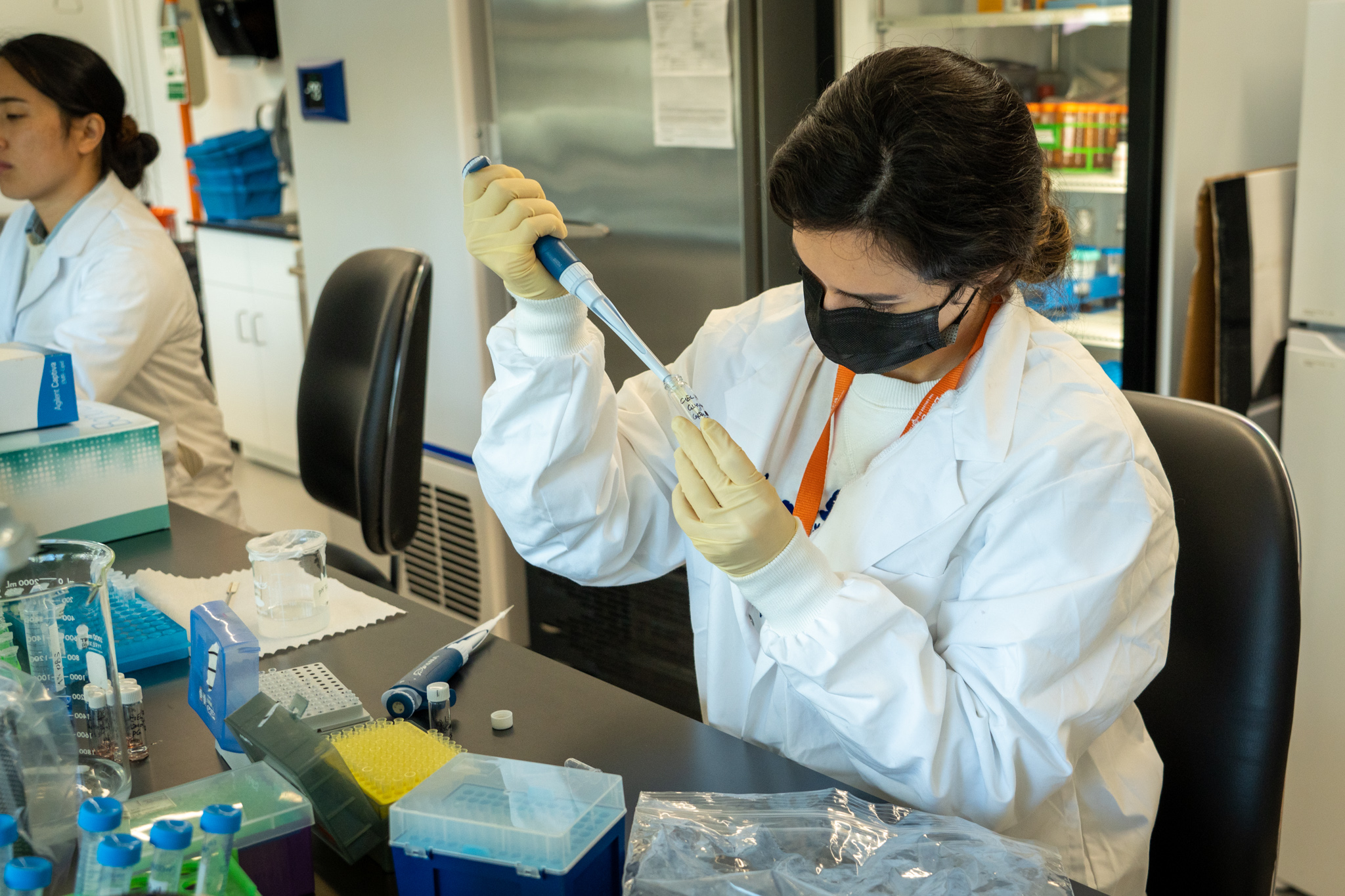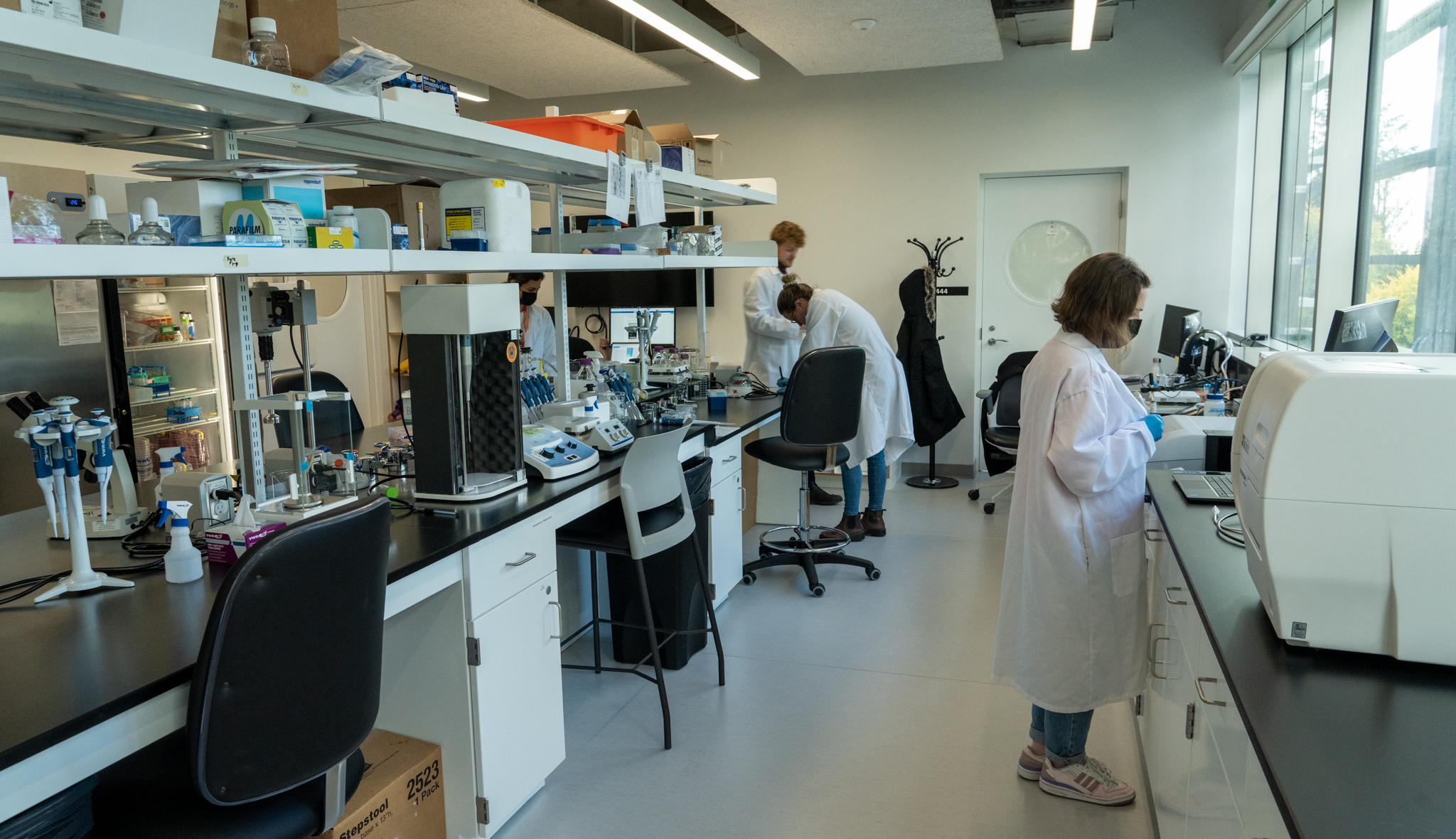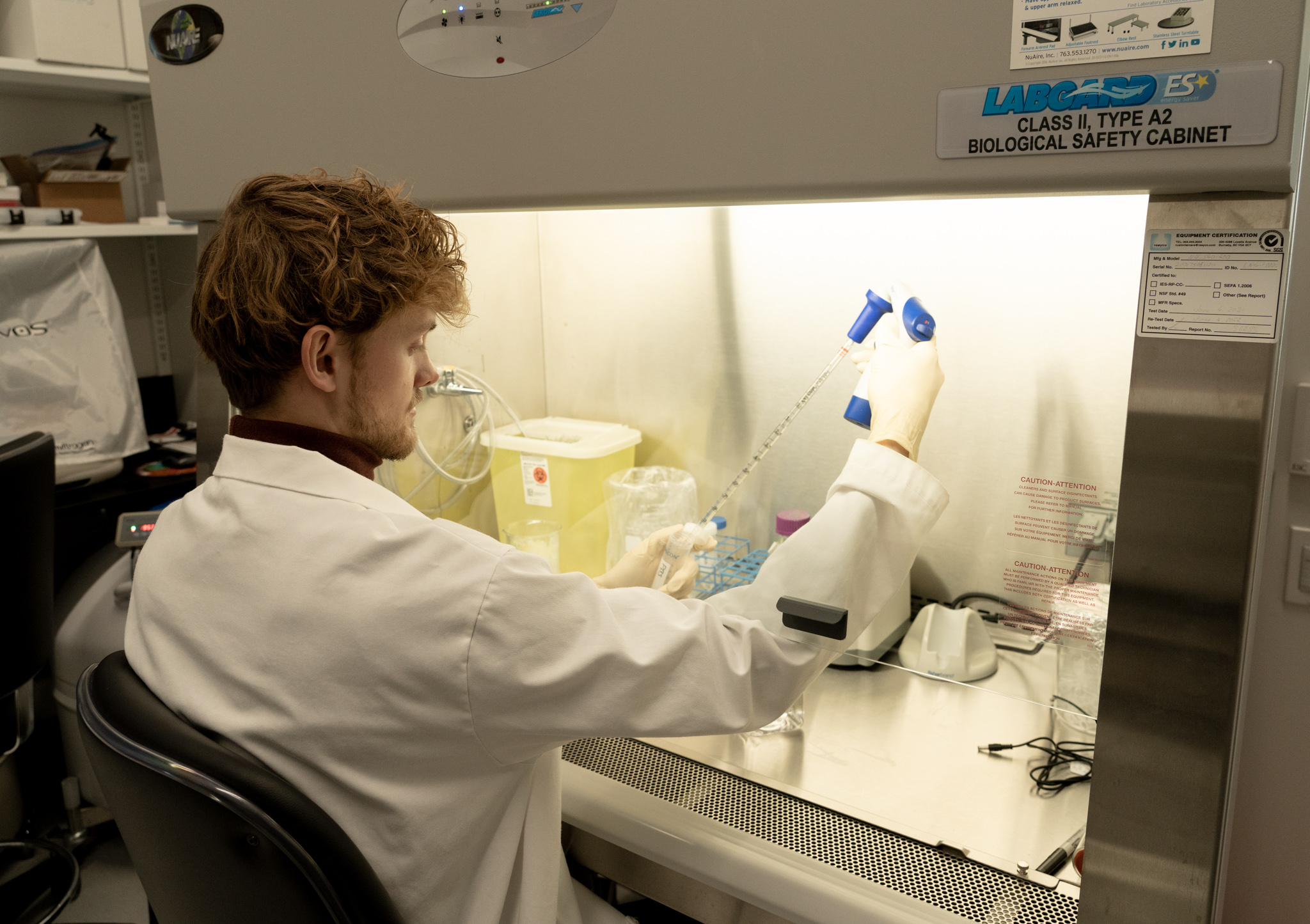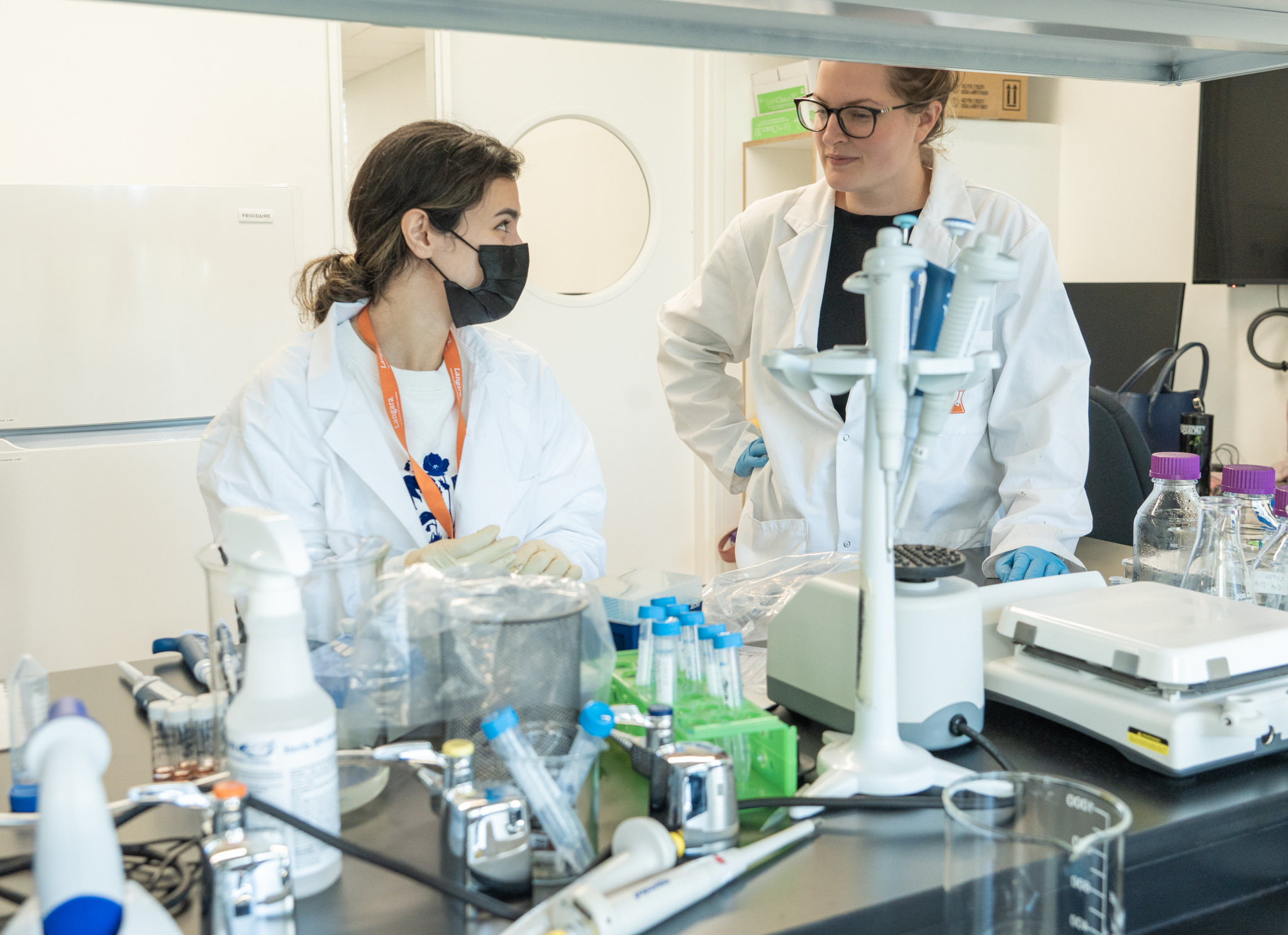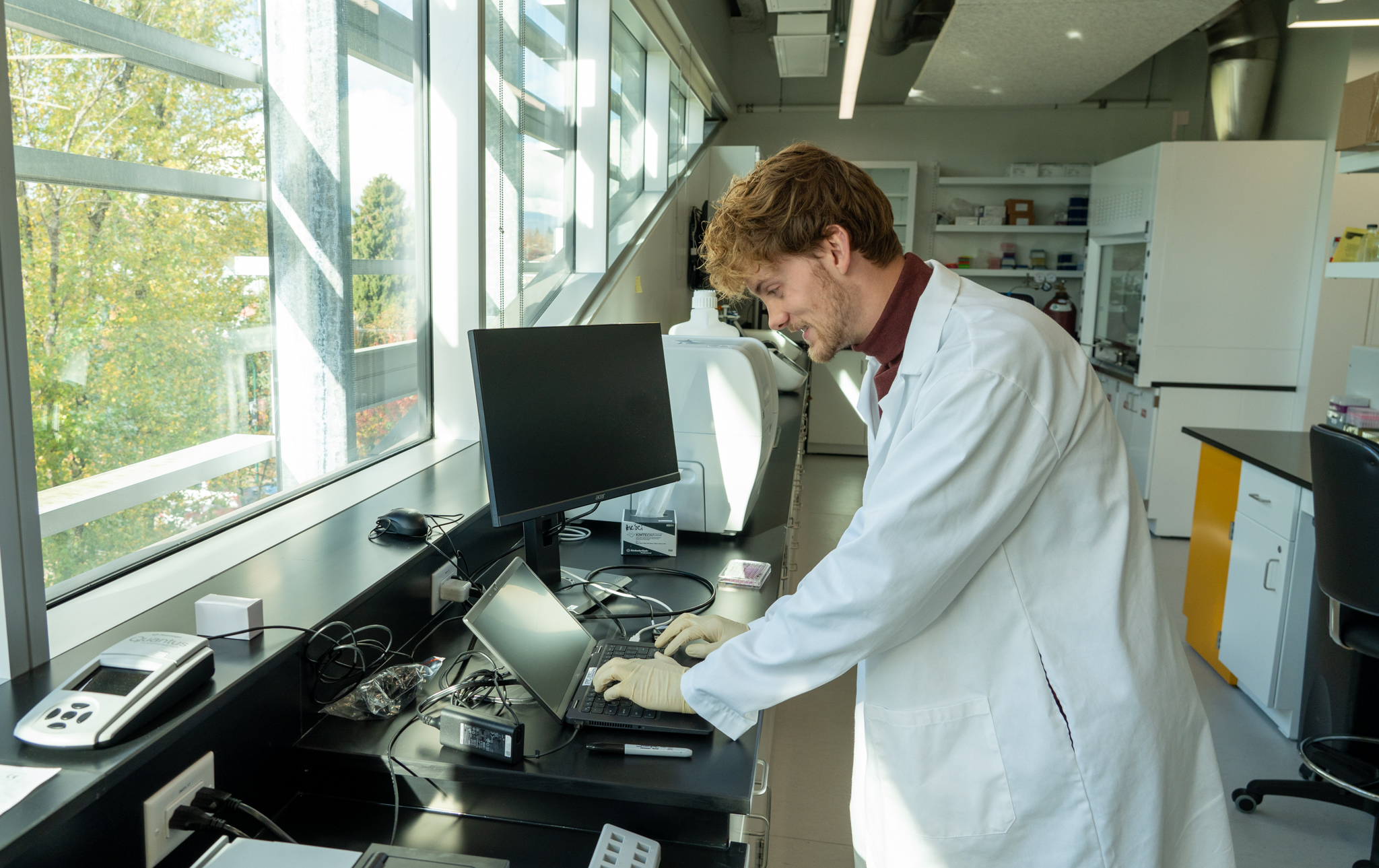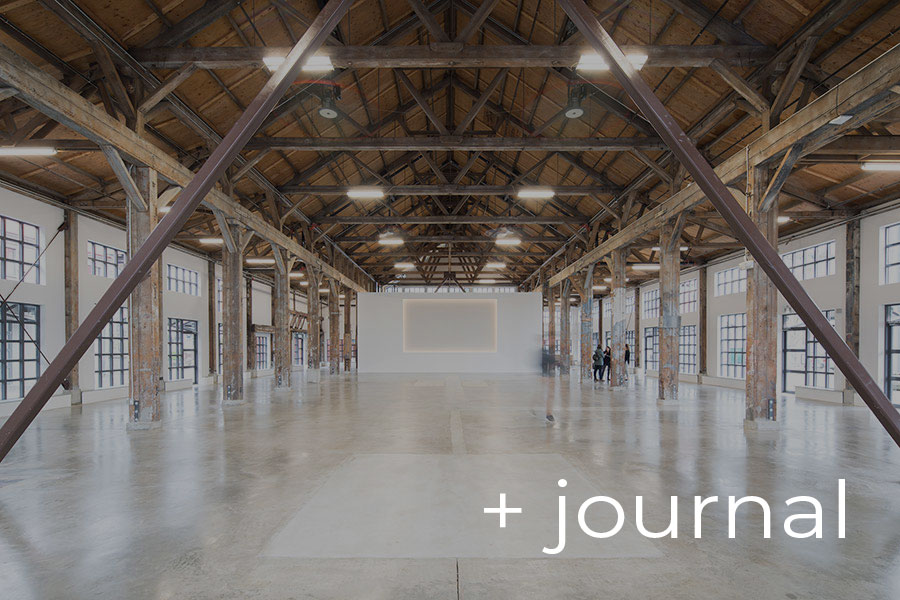
PAI Highlight: Langara Bioinformatics Lab
November 9, 2022
After a project is finished, the architect usually steps out of the equation. But we find it extremely valuable to check in after the fact to see how the design is supporting users. What is their day-to-day experience of the space? What design features are working well and what can we learn for future projects?
The Bioinformatics Lab at Langara College was completed in 2020 for the new and growing Bioinformatics department. It has been a year since students and faculty have been using the lab full-time, so it was a good time to connect with users. We had the pleasure of meeting two faculty members over Zoom, Prashant Kumar (Program Coordinator, Bioinformatics Faculty) and Brendan Morris-Reade (Research Assistant) to learn about the functionality of the space. A couple weeks later, we visited the project to see it action!
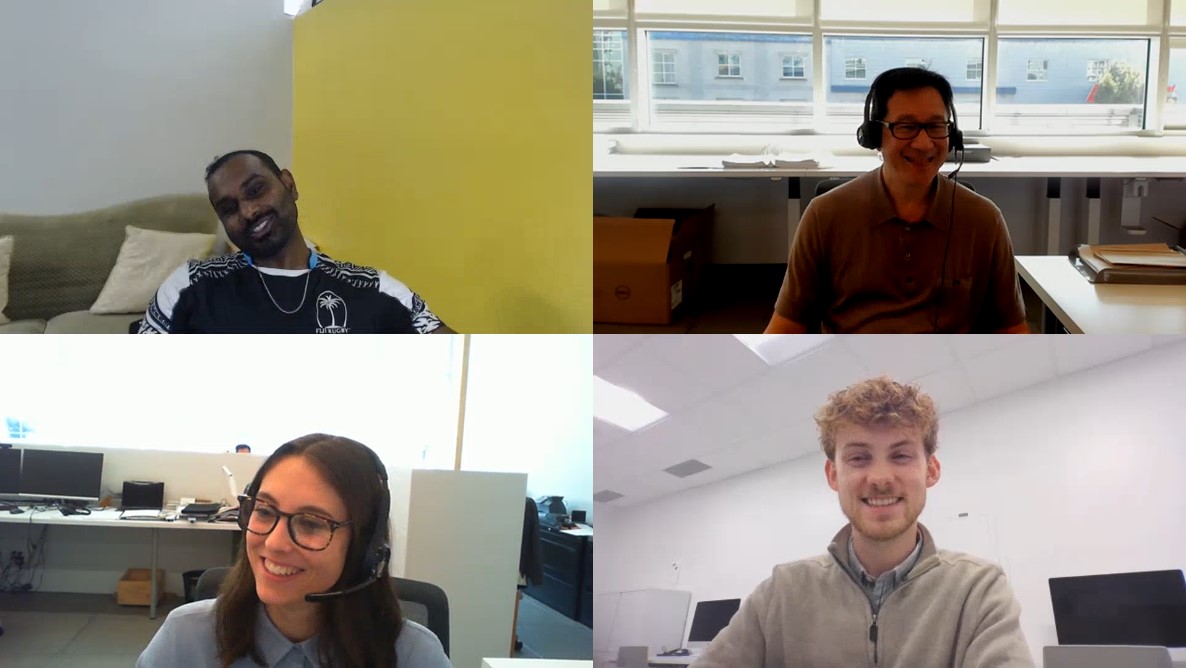
Prashant, Kori, Rachel and Brendan discussing the Bioinformatics Lab
It is inspiring to see the unique work this department is doing, and how the design supports their close work with industry partners. The students have the unique opportunity to conduct research projects alongside working professionals. Here are some highlights from our discussion:
What is Bioinformatics and how is it different from Biology?
Prashant Kumar: It’s a field that marries biology and computer science, which means biologists who have lots of data to analyze (be it DNA sequencing, metabolic data, etc.) can process it meaningfully. Langara is actually the first university in BC to offer a truly integrated Bioinformatics program.
Because in this field demand is high, as soon as you get people there’s a company that wants them and they disappear. But we have a great cohort at the moment.
How does the Bioinformatics lab differ from other Biology Labs?
Brendan Morris-Reade: We’re doing mammalian cell tissue culture in this lab so in terms of sterility there is a huge difference from other labs because you have to be very cautious about what you expose them to and make sure everything you’re culturing is what you intend to!
How is the design working out so far?
BMR: In terms of the lab, the bench space is good. I’ve been in this lab since most of the machinery was in boxes so it’s been great to see how it’s progressed. I think we have a good system going on right now and there aren’t too many people working in the lab at once, which works because only one person can use the tissue culture hood at once.
PK: One note is that it would have been phenomenal to have a separate entrance for tissue culture. Right now, you can’t do bacterial work on the left side of the lab because of the tissue culture on the right since spores and fungi can easily get to the other side.
How is the adjacent Mac lab being used and the 3 Virtual Reality stations?
PK: So far, we’ve mostly we’ve been booking the lab for computer science courses and bioinformatics courses. This year a Chemistry course will be using the VR stations for demonstrations for a molecular modeling course. I think it will be used more and more in the future.
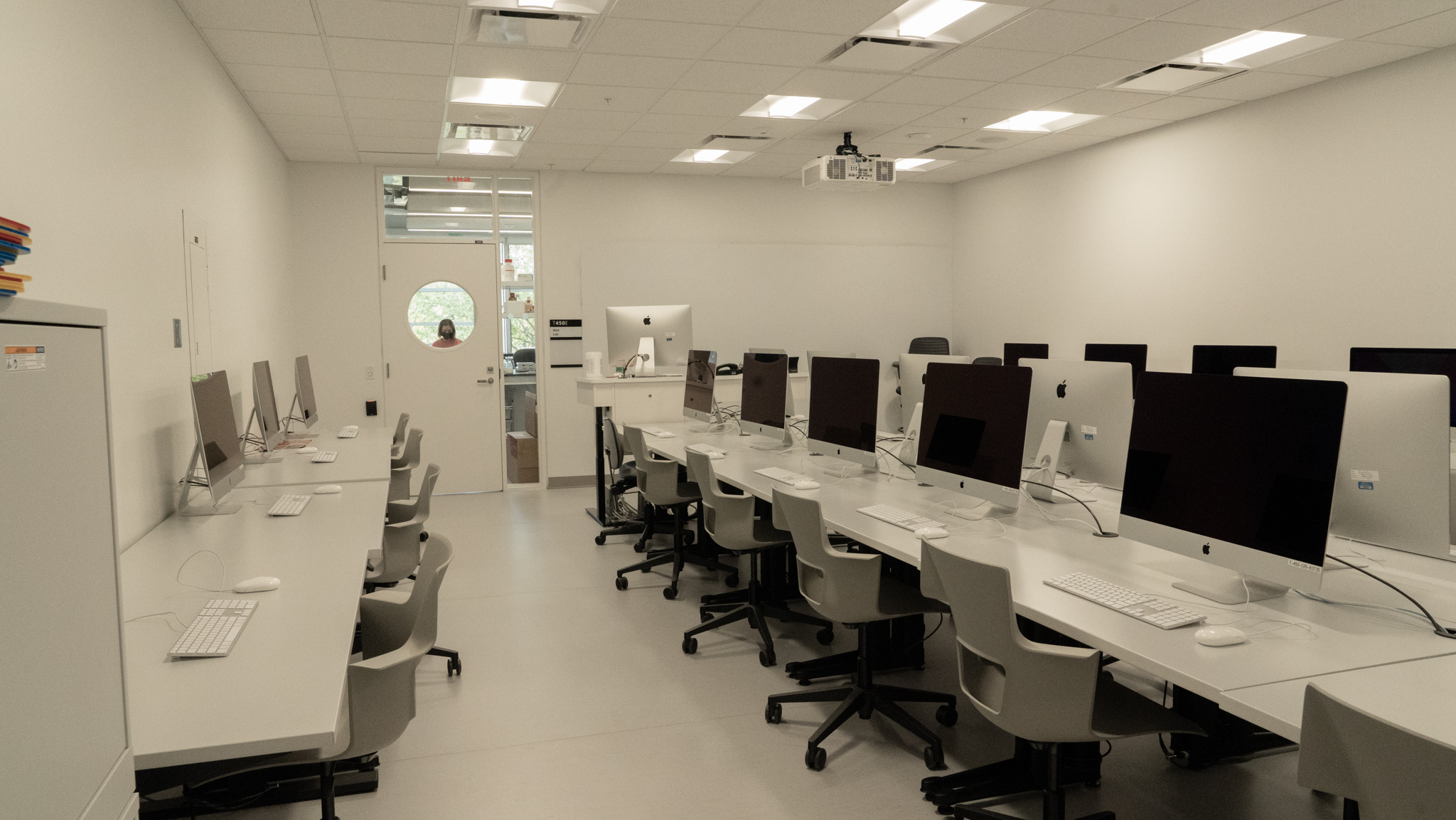
The project includes offices that were intended both for faculty and visiting industry professionals. How are they being used?
PK: The offices on the right or north side are occupied by Biology instructors, on the other side, two are occupied by Biology instructors, and one is for the industry partners to come and go.
BMR: I know personally, my office is currently in the SW corner of the main lab, I’ve enjoyed it there because I have a window and can see everyone that comes and goes and receive packages. But there is some noise overlap that is not the most conducive for office space. The fans are always running, you might be able to hear them even now as we speak.
Is the space supporting the connections between industry professionals and students?
PK: Yes, we have had great collaborations so far. We actually visit the industry – we go out to them, and they come in to see the facility and see how we do things. We learn from them and they learn from us. The relationships with industry partners have been really fruitful.
It sounds like your department is doing something very unique in the industry!
BMR: For sure. I did my Bachelors at SFU and I didn’t see any students doing research with industry partners. There was a lot of academic research going on, but industry-wise, I don’t know of any. But this year already, I’ve worked with 3 rounds of students with industry partners. There are even some professionals who send their representatives and researchers here that the students can directly interact with.
Do you see your program growing and expanding in the next 3-5 years?
PK: Yes, we have 15-20 students using the lab spaces and computer room at the moment and we are running out of space already. We are bringing in LCMS (liquid chromatography-mass spectrometry) with Kelly Sveinson as director of research, and we are definitely looking for more space. It’s a bit like Vancouver real estate!
Learn more about this project:


